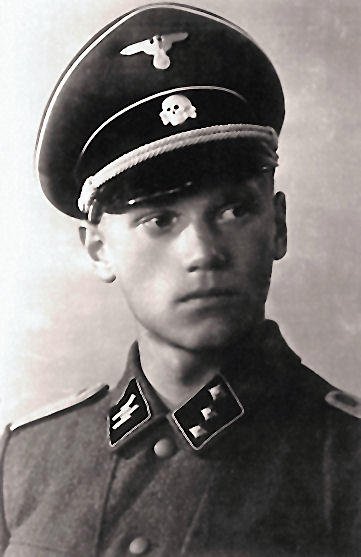A white granite headstone in Section 60 of Arlington National Cemetery bears a name that sounds American: Larry Allan Thorne. But the man buried there was born Lauri Allan Törni in Viipuri, Finland, on May 28, 1919, fought for three nations across three decades, and remains the only known former Waffen-SS member interred at Arlington — a legendary soldier who became a U.S. Army Special Forces hero.
Fighting for Finland in the Winter War
Törni enlisted in the Finnish military in 1938, joining the 4th Independent Jaeger Infantry Battalion. When the Soviet Union invaded Finland in November 1939, launching the Winter War, his battalion deployed to face the Red Army at Rautu.
During battles at Lake Ladoga, Törni helped his unit destroy several encircled Soviet divisions at Lemetti. His amazing performance caught his commanders’ attention. By the end of the war in March 1940, he earned a promotion to second lieutenant in the reserves.
After the Winter War, Törni traveled to Vienna, Austria, in June 1941 for seven weeks of training with the Waffen-SS in mountaineering and cold-weather tactics. He returned to Finland in July 1941, just as the Axis launched Operation Barbarossa: The Invasion of the Soviet Union.
The Continuation War and Mannerheim Cross
Finland joined Germany and its allies during the invasion in the hopes of regaining their lost territory from the Winter War. The Finns were not an official member of the Axis and viewed their participation as a separate conflict known as the Continuation War.
In 1943, Törni took command of an elite unit known simply as Detachment Törni. The infantry unit penetrated deep behind Soviet lines, harassing supply routes and causing mass confusion for enemy troops. The Soviets feared the Finn’s masterful use of the terrain.
Future Finnish President Mauno Koivisto served in a reconnaissance company under Törni’s command during the Battle of Ilomantsi in July and August 1944. Koivisto later recalled that Törni “emphasized that we were all the same bunch, and he bore his share just like the others. He did not ask anyone to do something he did not do himself. He carried his own load, marched at the lead, and was one of us.”
The Soviet Army placed a bounty of three million Finnish marks — roughly $650,000 at the time — on Törni’s head. On July 9, 1944, he received the Mannerheim Cross, Finland’s highest military honor and equivalent to the Medal of Honor.
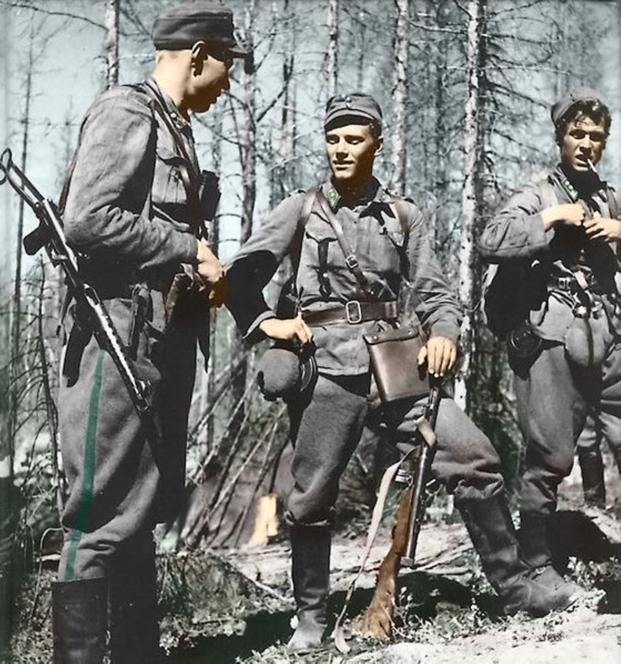
Waffen-SS Service and Treason Conviction
With the Axis being ejected from Soviet territory, Finland was forced to sign the Moscow Armistice with the Soviet Union in September 1944. The treaty required the government to remove German troops from Finnish territory by force in the Lapland War. The bulk of the Finnish Army demobilized, leaving Törni unemployed.
In January 1945, Törni joined a pro-German resistance movement that aimed to organize guerrilla fighters in case the Soviet Union decided to occupy Finland. He traveled to Germany for saboteur training, but the training was called off in March as the German military collapsed. Unable to return to Finland, he joined a German Waffen-SS unit fighting Soviet troops near Schwerin until the end of the war.
With Hitler dead and the German army in tatters, he traveled across Germany to escape the Soviets and surrender to British forces. He was sent to a prisoner of war camp but escaped and returned to Finland in June 1945.
Finnish authorities later arrested him in April 1946. After a trial from October to November 1946, he received a six-year prison sentence for treason in January 1947. He escaped from Turku provincial prison in June but was recaptured and sent to Riihimäki State Prison. Due in part to his heroic actions against the Soviets, Finnish President Juho Paasikivi pardoned him in December 1948.
His conviction sparked debate in Finland that continues today. A 2013 book by Finnish historians Juha Pohjonen and Oula Silvennoinen argued the treason conviction was justified because Törni’s training was meant to support a National Socialist coup in Finland. Finnish Minister of Defence Jussi Niinistö countered that Törni acted from patriotism and fear that Russia would occupy Finland.
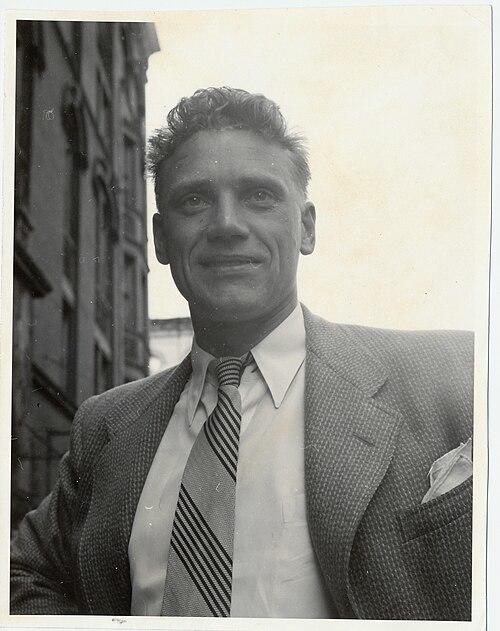
From Finland to U.S. Special Forces
After his 1948 pardon, Törni eventually made his way to the United States. Near Mobile, Alabama, in 1950, he jumped from a cargo ship and swam to shore, claiming political asylum. Former OSS chief William “Wild Bill” Donovan helped him secure residency.
The 1950 Lodge-Philbin Act allowed foreigners to join the U.S. military and earn citizenship after five years of honorable service. In 1954, Törni enlisted as a private, adopting the Americanized name Larry Thorne.
Thorne joined an Army Special Forces team with help from Finnish-American officers known as “Marttinen’s Men.” His wartime experiences earned him an instructor job at Fort Bragg, teaching skiing, survival, mountaineering, and guerrilla tactics. He eventually received U.S. citizenship in 1957, as well as a commission as an officer and a promotion to captain in 1960.
From 1958 to 1962, he served with the 10th Special Forces Group in West Germany. He gained recognition by helping lead a successful search and recovery mission for classified military documents from a plane crash high in the Zagros Mountains of Iran after three previous missions had failed.
Col. Charles M. Simpson III wrote that he would “fight to serve with him again under similar conditions, particularly in combat requiring great maturity, perseverance, physical and moral courage, and personal leadership.”
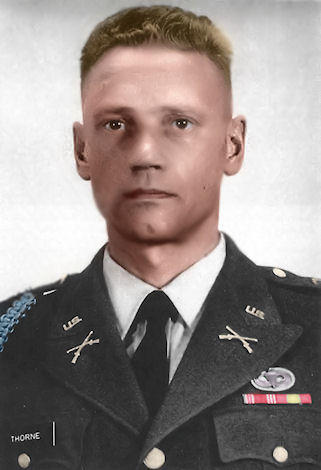
Special Forces Operations in Vietnam
Thorne deployed to South Vietnam in November 1963 with Special Forces Detachment A-734. The government valued his experience operating in harsh terrain behind communist lines. During a fierce attack on a camp in Tịnh Biên, he received two Purple Hearts and a Bronze Star for valor.
He returned for a second tour in February 1965 with MACV-SOG, helping establish procedures for the covert unit to begin conducting clandestine operations throughout Southeast Asia.
On Oct. 18, 1965, Thorne supervised the first Operation Shining Brass cross-border mission into Laos. While overseeing the insertion of a reconnaissance team from his command helicopter in severe weather, the aircraft crashed into a mountainside.
Search and rescue teams recovered the remains of the three South Vietnamese crew members but found no trace of Thorne. The Army initially listed him as missing in action. On Oct. 19, 1966, he was declared killed in action.
The Army promoted Thorne to major posthumously and awarded him the Distinguished Flying Cross and Legion of Merit.
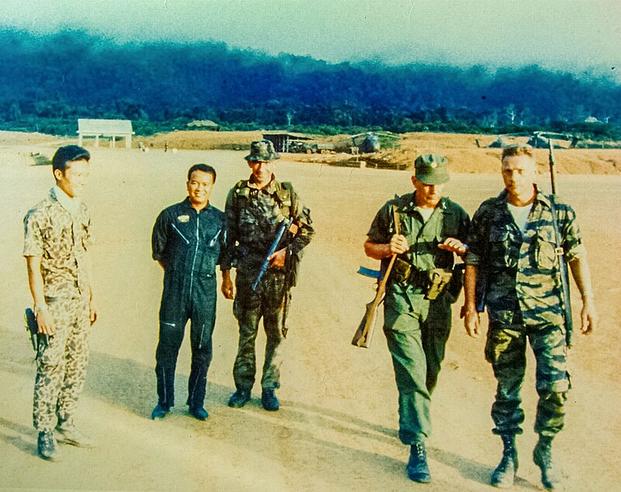
Burial at Arlington National Cemetery
In 1999, a joint U.S.-Finnish task force discovered Thorne’s remains at the crash site. Dental records confirmed his identity in 2003.
On June 26, 2003, the Army buried Thorne with full military honors at Arlington National Cemetery. His remains were placed in a casket with the three South Vietnamese crew members who died with him: 1st Lt. Bao Tung Nguyen, 1st Lt. The Long Phan and Sgt. Vam Lanh Bui. His name appears on the Vietnam Veterans Memorial at Panel 02E, Line 126.
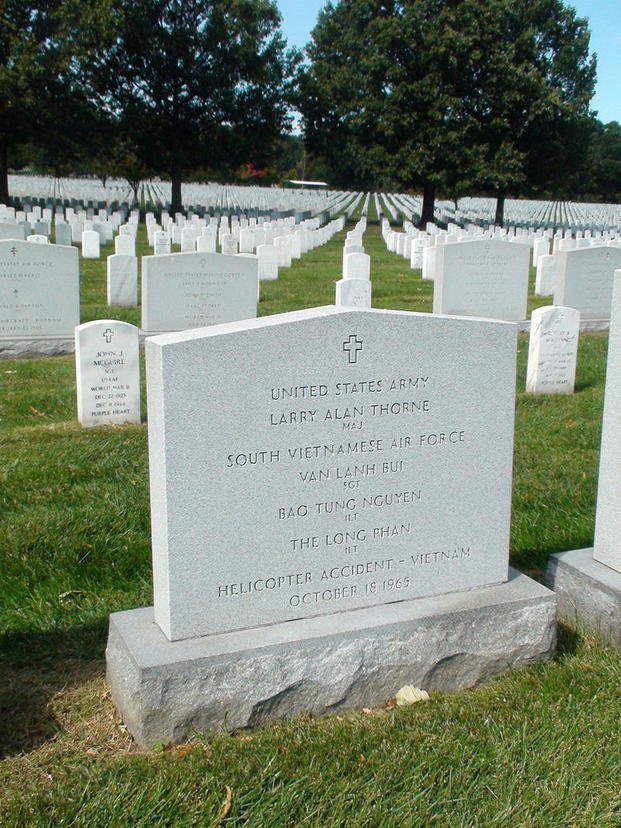
The 10th Special Forces Group headquarters building at Fort Carson, Colorado, bears Thorne’s name. Each year, Army Special Forces presents the Larry Thorne Award to the best Operational Detachment-Alpha team in the command.
In 2010, he became the first Honorary Member of the United States Army Special Forces Regiment. In 2011, he was inducted into the United States Special Operations Command Commando Hall of Honor.
In Finland, museums in Mikkeli and Helsinki have exhibits dedicated to Törni. In 2006, Suomen Sotilas magazine named him the most courageous of all Mannerheim Cross recipients.
U.S. Army Special Forces Col. Sean Swindell described Thorne as “a complex yet driven man who valorously fought oppression under three flags and didn’t acknowledge the meaning of quit.”
Story Continues
Read the full article here



